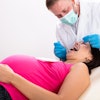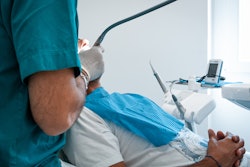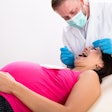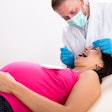The worldwide burden of edentulism is expected to rise due to population growth and aging, with a substantial impact anticipated by 2040, according to a study recently published in the International Dental Journal.
Furthermore, high sociodemographic index (SDI) countries and women may face a disproportionately higher burden of tooth loss, the authors wrote.
"These results indicate that edentulism continues to be a significant global public health concern, particularly as its prevalence is expected to rise with the aging population," wrote the authors, led by Hui Min Chen of the University of Hong Kong (Int Dent J, December 31, 2024).
In 2021, approximately 4.4% of the global population was affected by edentulism, nearly doubling since 1990. The prevalence rate rose from approximately 3,310 per 100,000 in 1990 to 4,473 per 100,000 in 2021, with incidence and disability adjusted life years (DALY) rates also increasing.
The Global Burden of Disease (GBD) study provided epidemiological data on edentulism from 1990 to 2021, covering 204 countries and regions. Edentulism was assessed using DALYs, which measure health loss primarily through years lived with a disability (YLD), as years of life lost (YLL) is negligible for this condition, they wrote.
The study used disability weights to quantify the impact of edentulism and unadjusted age estimates to capture regional health burdens. Social and economic development, measured by the SDI, was analyzed alongside data disaggregated by sex and SDI levels. An autoregressive integrated moving average model was employed to predict edentulism prevalence trends for 2022 to 2040.
By 2040, the global prevalence is projected to increase by about 12%, reaching 5,004 per 100,000, the authors wrote.
High SDI countries had the highest prevalence compared to low SDI countries, and women had a disproportionately higher burden, comprising 58.1% of the global edentulous population with a DALY rate of 140.94 per 100,000 versus 102.27 per 100,000 for men. The incidence peaked between ages 70 to 80, shifting slightly to 75-79 in 2021, while the burden of periodontal disease peaked earlier at ages 50 to 59.
Despite a gradual decline in age-standardized prevalence and DALY rates since 1990, high SDI regions and women, especially those ages 75 to 84, continue to face the greatest burden, they wrote.
However, the study had limitations. The GBD study currently estimates edentulism but lacks data on partial tooth loss. Future research should consider factors like prosthesis use and necessity to provide a more comprehensive assessment of the burden associated with edentulism and partial tooth loss, the authors added.
"This study highlights the urgent need for greater efforts to address the factors contributing to edentulism among the population," they concluded.




















